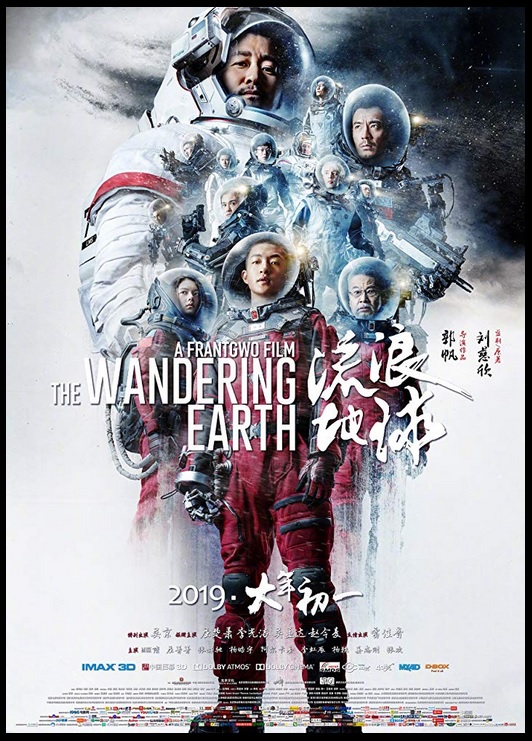This one is for the Lords of the Rings trilogy fans.
This New Zealand-produced entry is an end-of-the-world dramatic-mystery thriller and not some Down Under, post-apoc frolic in the vein of Mad Max, Battletruck, Dead End Drive-In, or Turkey Shoot. Unlike most low-budget “futures” that have no choice but to create simplified futures utilizing clothing, technology, vehicles, and architecture that resemble our present—there’s nothing “simplified” about The Quiet Earth. This introspective story ranks with the class and style Francois Truffaut’s Fahrenheit 451 (1967), the American PBS-TV adaptation of Ursula K. LeGuin’s A Lathe of Heaven (1980; the great Bruce Davison), the equally beautiful Testament made for the PBS “American Playhouse” series (1983; starring the awesome Jane Alexander), and Nicholas Meyer’s exquisitely dire The Day After (1983; with the skilled John Lithgow, Amy Madigan, Jason Robards, and JoBeth Williams).

The Quiet Earth works because we’re in the “first day” of the post-apocalypse of our present and not a budgetary-inept projected future. There’s no low-budget nuclear holocaust or worldwide plague that text scrolls and voice-over photo montages us into boredom. There are no petulant dramatic arcs or epic events, just plausibility on how humans realistically accept the fact that they’re living in a world — a day after the end. While there are a few action set pieces and explosions, they’re not superfluous, Roger Corman-plot deficiency compensations.
New Zealand’s greatest acting export, Bruno Lawrence (who made the post-apoc rounds in Battletruck and received international acclaim for 1981’s Smash Place; VHS hounds remember him for 1981’s less successful, Race for the Yankee Zephyr), is Zac Hobson. A scientist employed by an international conglomerate, Zac wakes up the from the night before, only to watch the morning sun “oscillate” to darkness—and it kills all radio communications. He comes to discover that, while it’s the same work-a-day world as yesterday, everyone, except him, has vanished. And instead of the hackneyed apoc bomb drop, plague, or space infestation, Hobson discovers “Project Flashlight,” the consortium’s experiment to create a unifying and lifesaving “global energy grid,” malfunctioned, resulting in a dimensional timeshift.
As with his aforementioned apoc-thespian peers from across-the-pod, Lawrence (excellently) wanders through a deserted city as he copes with the silence and loneliness, and eventual madness, which results in his dressing in woman’s clothing and creating cardboard cutouts of people. He comes to find — and have a sexual relationship with — a young woman, Joanne (Allison Routledge of New Zealand’s “Deliverance,” 1986’s Bridge to Nowhere; with Lawrence). The duo then discovers a third person, Api, an indigenous Polynesian Maori man (Peter Smith). This sets up a reminiscent emotional triangle—only with superior acting chops and cinematic style—from the first wave of post-apocalyptic/end-of-the-world films of the ‘50s and ‘60s, with the analogous precursors: the good, MGM’s The World, the Flesh, and the Devil (1958), and that film’s inferior Corman-clone, The Last Woman on Earth (1966). Somewhat reminiscent of Richard Matheson’s 1954 novel I Am Legend; adapted as The Last Man on Earth (1964), The Quiet Earth is based on the 1981 Craig Harrison book of the same name.
Since you’re being encouraged to watch this intriguing film that embarrasses most of the other day-of-reckoning films reviewed on B&S Movies, there’s no need to inundate this review with plot spoiler minutiae, except to say: As the omega triangle begins to shatter and the trio discovers why they survived, the “MacGuffin” that created the rip in the space-time continuum is ready to “oscillate” once more.
Geoff Murphy gained worldwide recognition outside of New Zealand with his fourth feature, Goodbye Pork Pie (1981; stars Bruno Lawrence), a very funny road movie critically described as Easy Rider meets The Keystone Cops. Murphy made his Hollywood directorial debut — and had box office hits — with the brat-pack western Young Guns II (1990) and sci-fi’s Freejack (1992). He achieved his biggest international box office success as a director with Steven Seagal’s Under Seige 2: Dark Territory (1995). At that point, Murphy went into 2nd Unit work on the volcano-disaster epic Dante’s Peak (1997) and Peter Jackson’s Lord of the Rings blockbuster trilogy (2001 to 2003).
Film Movement Classics released a DVD/Blu-ray 2K Restoration in 2017. Arrow Films issued their Blu-ray in July 2018. You can also stream the films via Amazon Prime, Google Play, and Vudu. We also took another look-see as result of our “Cannon Month” of reviews, as they re-distributed the film on video in overseas markets.
Here’s a few, less quite Earth flicks to enjoy (click the images to get there).






About the Author: You can read the music and film reviews of R.D Francis on Medium and learn more about his work on Facebook.